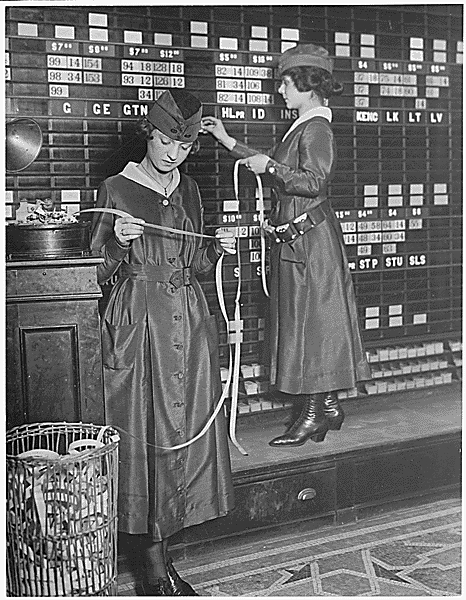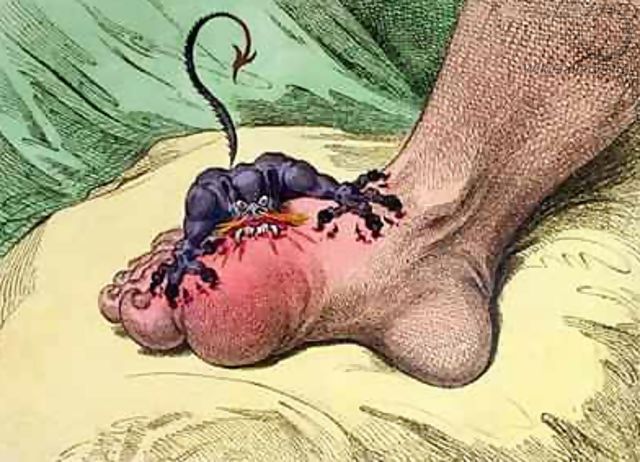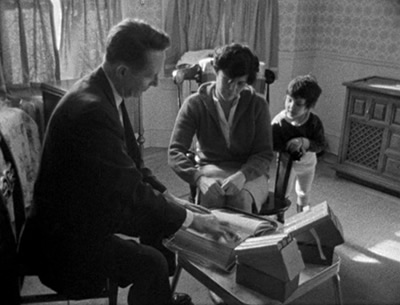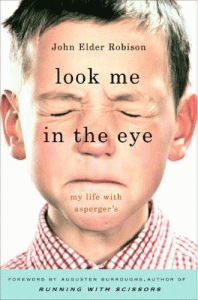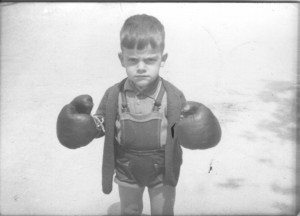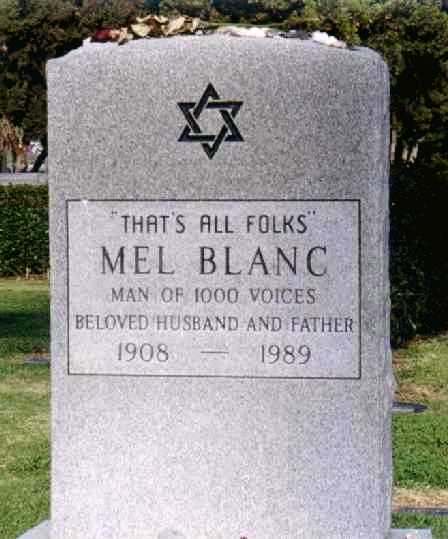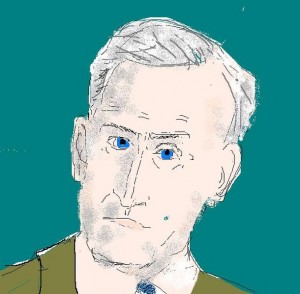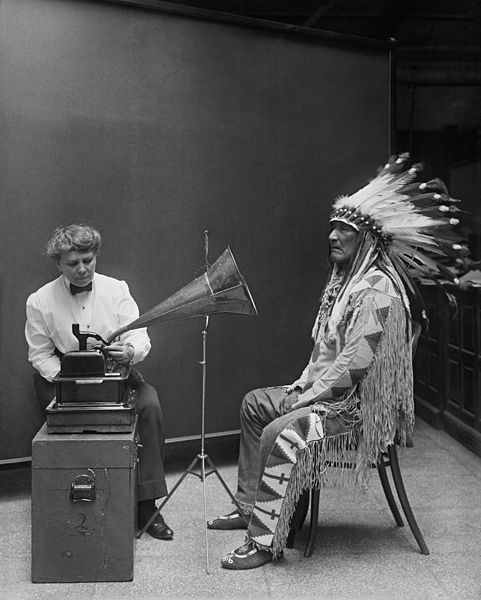Rosie famously riveted on the home front during World War II, but the fighting of World War I had likewise necessitated American women being recruited to replace men in the workforce. In this classic 1918 photo by Underwood & Underwood, young women operate the Waldorf-Astoria Hotel’s Stock Exchange Board, reading tickers and manually adjusting numbers. The Waldorf had several years earlier shown a progressive attitude toward women when it reportedly became the first upscale NYC hotel to allow women to stay in its rooms without an escort. Two years after this photo was taken, the Nineteenth Amendment was ratified, and U.S. women had won the vote.
You are currently browsing the yearly archive for 2011.
A 1988 panel discussion about the origins of our universe and more, with an amazing lineup: Carl Sagan, Arthur C. Clarke and Stephen Hawking.
WANTED: Your Spare PENNIES in your Home! – (Brooklyn)
Hi, do you have an old pickle jar, a plastic cup, or whatever of semi-filled pennies that you thought about saving but you really don’t see the saving going anywhere with them? If you want to keep your pennies, KEEP them by all means, the are YOUR pennies, you EARNED them. But if you have Pennies just sitting there and you really don’t see any use for them other than collecting dust, I’d love to have them!
Right now I have about a water jug filled of pennies, I’m trying to get more, and more and more of these pennies and see what the heck happens! I’m weird, smart, thrifty, cheap, whatever, I just want to continue collecting as many pennies as I can.
Please email me and let me know when I come come pick up some pennies and about how many pennies (Half a glass full, a wine bottle full, half a pickle jar full) — whatever!)
Am I a special person? No. Am I in need? I think we all are right now, more so than others? No I am not. Will I spend these pennies on charity? I don’t know what I will do with them to be honest.
So please, email me, curse me out! Call me a bum, or be nice and offer me the pennies sitting in that bottle on your china cabinet that you will never do anything with anytime soon! Thanks!
From the August 12, 1877 Brooklyn Daily Eagle:
“Christopher Tenney, aged 35, of No. 70 South Washington Square, New York, has been sick for several days with cholera morbus, and was also troubled with the gout. This morning he took a large dose of gout medicine in a mistake, and soon afterward died. Coroner Flanagan has been called to investigate the case.”
Tags: Christopher Tenney
Treebot–from Hong Kong to your heart. (Thanks IEEE Spectrum.)
Creative destruction is an essential part of economic regeneration, as paradigms shift, structures change and tools develop. Fresh ideas challenge the accepted order, and emerging industries replace established ones. Simply put, it’s out with the old and in with the new. We’re experiencing it now as the information economy and digital communications ascend, disappearing other industries. But even if this process is best (and even necessary) for long-term solvency, what about those left behind in the shuffle, those dots on the graph who are made with red ink?
This situation, of course, is nothing new. Albert and David Maysles made this prickly transition period the crux of their breakthrough 1968 documentary, Salesman, which put a sad and human face on those who were moving as fast as they could while still being left behind. In vérité style, the filmmakers follow a crew of Massachusetts-based door-to-door bible salesmen who try to push handsomely illustrated books on working-class people who are struggling to feed the kids and pay the mortgage. By the late ’60s, itinerant peddling had reached obsolescence as enclosed malls became popular, people grew reluctant to open their doors for strangers and cars were so ubiquitous that no one needed the “store” to come to them. Additionally, religion and traditional values were losing their grip on the collective will of the people, so these sellers were up against it.
There are funny moments in cheap motels and in the modest, often shabby, homes they visit, but as one of the salesman, middle-aged Paul “The Badger” Brennan, struggles to keep his job and quell his frustrations, the movie develops into an American tragedy. Right before his eyes (and ours), Brennan’s way of life runs out of time before he does. As the regional managers berate the crew into producing bible sales that seem to grow scarcer by the day, the men have to fool themselves into not losing their religion. But Brennan, a wizened chain-smoker, can no longer manage the ruse. “If a guy’s not a success he’s got nothing to blame but hisself!” barks one of the bosses. But sometimes problems are more complex than that and the sweep of history wider.•
Jack Kroll of Newsweek interviews the Maysles:
Tags: Albert Maysles, David Maysles, Jack Krol, Paul "The Badger" Brennan
When this interview was taped in 1997, it probably wasn’t apparent to too many people–even Jon Stewart himself?–that the younger comic would inherit the mantle of outraged, clear-eyed American conscience from George Carlin. Such different people who arrived at the same destination.
Tags: George Carlin, Jon Stewart
Excellent post on the NeuroTribes blog by Steve Silberman about John Elder Robison, an author and auto mechanic with Asperger syndrome. An excerpt:
“John Elder Robison would stand out in a crowd even if he didn’t have Asperger syndrome. A gruff, powerfully built, tirelessly curious, blue-eyed bear of a man, he hurtles down a San Diego sidewalk toward a promising Mexican restaurant like an unstoppable force of nature. ‘What’s keepin’ you stragglers?’ he calls back to the shorter-legged ambulators dawdling in his wake.
As they catch up, Robison utters his all-purpose sound of approval — ‘Woof!’ — which he utters often, being a man in his middle years who is finally at peace with himself after a difficult coming-of-age. For the acclaimed author of the 2007 New York Times bestseller Look Me in the Eye, a diagnosis of Autism Spectrum Disorder in mid-life was liberating, giving a name to the nagging feeling that he was somehow different from nearly everyone around him.”
••••••••••
Robison speaking at GoogleTalks:
The great Open Culture points out that the much-loved 1963-1988 nature TV program, Mutual of Omaha’s Wild Kingdom, has a Youtube channel with some great footage. Hosted by zoologists Marlin Perkins and Jim Fowler, the show raised environmental awareness and made it perfectly clear that the ecosystem was not something to be tampered with. And in years before cable and the Internet, this program, along with Wide World of Sports, introduced Cold War-era Americans to far-flung corners of the world they were supposed to ignore or fear.
Watch the “Land of Quaking Earth” episode, which features a reel-to-reel tape player and a monkey in a yellow suit slapping the crap out of an owl:
A wild tale about the normally mild-mannered Perkins from the Canadian Broadcasting Corporation site: “Of course, asking the difficult question can be hazardous to a host’s health. In 1982, the fifth estate investigated whether the many nature documentaries interfered with nature for dramatic purposes. Bob McKeown reported how a Disney documentary showing the phenomenon of lemmings plunging to their death over cliffs had in fact been the same film footage spliced together to give the appearance of mass suicide. When McKeown interviewed zoologist Marlin Perkins, host of Wild Kingdom about truth and fiction on wildlife programmes, he clearly hit a raw nerve. The octogenarian Perkins firmly asked for the camera to be turned off, then punched a shocked McKeown in the face.”
Tags: Bob McKeown, Jim Fowler, Marlon Perkins
The Awl, that fascinating stream of information and ideas, has a particularly wonderful article-length post in “Wikipedia and the Death of the Expert,” which was written by Maria Bustillos. It was just a few short years ago that Jimmy Wales’ brainchild was being openly mocked. People were too focused on what Wikipedia wasn’t (a flawless source), ignoring what it was (an excellent starting point for a curious mind, one of the great triumphs of crowdsourcing and an apotheosis of amateurism). But the laughter has stopped. Wikipedia hasn’t contributed to the decline of civilization but to the storehouse of knowledge, widening it with a lack of disdain toward so-called “low culture.” The original idea for Wikipedia didn’t come from crowdsourcing, but it would still be an empty room without the crowd that occupied it.
The opening of Bustillos’ Awl post:
“It’s high time people stopped kvetching about Wikipedia, which has long been the best encyclopedia available in English, and started figuring out what it portends instead. For one thing, Wikipedia is forcing us to confront the paradox inherent in the idea of learners as ‘doers, not recipients.’ If learners are indeed doers and not recipients, from whom are they learning? From one another, it appears; same as it ever was.
It’s been over five years since the landmark study in Nature that showed ‘few differences in accuracy’ between Wikipedia and theEncyclopedia Britannica. Though the honchos at Britannica threw a big hissy at the surprising results of that study, Nature stood by its methods and results, and a number of subsequent studies have confirmed its findings; so far as general accuracy of content is concerned, Wikipedia is comparable to conventionally compiled encyclopedias, including Britannica.”
••••••••••
Jimmy Wales describes the birth of Wikipedia at TED in 2005:
The conclusion of Stacy Schiff’s 2006 New Yorker article, “Know It All,” which realized that the Wiki mob was winning but wasn’t sure if the victory was Pyrrhic: “In the nineteen-sixties, William F. Buckley, Jr., said that he would sooner ‘live in a society governed by the first two thousand names in the Boston telephone directory than in a society governed by the two thousand faculty members of Harvard University.’ On Wikipedia, he might finally have his wish. How was his page? Essentially on target, he said. All the same, Buckley added, he would prefer that those anonymous two thousand souls govern, and leave the encyclopedia writing to the experts.
Over breakfast in early May, I asked Cauz for an analogy with which to compare Britannica and Wikipedia. ‘Wikipedia is to Britannica as ‘American Idol’ is to the Juilliard School,’ he e-mailed me the next day. A few days later, Wales also chose a musical metaphor. ‘Wikipedia is to Britannica as rock and roll is to easy listening,’ he suggested. “It may not be as smooth, but it scares the parents and is a lot smarter in the end.’ He is right to emphasize the fright factor over accuracy. As was the Encyclopédie, Wikipedia is a combination of manifesto and reference work. Peer review, the mainstream media, and government agencies have landed us in a ditch. Not only are we impatient with the authorities but we are in a mood to talk back. Wikipedia offers endless opportunities for self-expression. It is the love child of reading groups and chat rooms, a second home for anyone who has written an Amazon review. This is not the first time that encyclopedia-makers have snatched control from an élite, or cast a harsh light on certitude. Jimmy Wales may or may not be the new Henry Ford, yet he has sent us tooling down the interstate, with but a squint back at the railroad. We’re on the open road now, without conductors and timetables. We’re free to chart our own course, also free to get gloriously, recklessly lost. Your truth or mine?”
Tags: Maria Bustillos, Stacy Schiff
Filmmaker with a Great Story!! (Upper East Side)
I am a PG screenplay writer with a delightful story waiting to be displayed
on the silver screen. I put a product on Ebay, a photo for sale at 99 cents
each. If I can sell enough of them, or if a person with means comes along
first with some ‘doe-ray-me”, we can make a great show!!
••••••••••
“With Basic Instinct…it took 13 days, literally, from the time I started writing to the time it sold.”
,
In 1997, William Gibson expounds with scary accuracy about the fast, cheap and out-of-control nature of that developing non-hierarchical mass medium known as the World Wide Web.
Tags: William Gibson
Footage of the Stepper 3D humanoid robot perambulating at Tsinghua University. The bot is being developed to participate in an annual soccer tournament called RoboCup, which will be held this year in Istanbul in July. From Singularity Hub: “I love the idea behind RoboCup: using the game of soccer to develop robotics and promote science and technology. The robots operate autonomously during play, utilizing programs that determine how they will find the ball, control the ball, and score a goal. RoboCup’s ultimate mission is to generate robots that can beat humans at a soccer match by the year 2050.”
In the 1965 Pageant magazine article, “The 450-Square-Mile Parking Lot,” Hunter S. Thompson (who hadn’t yet begun using the middle initial) looked up at the sunny Los Angeles sky and saw it falling, with the county becoming overcrowded and choked with exhaust. In retrospect, of course, it all seems quaint. The opening:
“If you count yourself in that legion who’ve been ‘thinking’ for years about moving to California–and especially to the Los Angeles area in Southern California–you’d better get your plans into high gear pretty soon, or forget it. Because the Golden State is getting crowded. So many people have gone there seeking the ‘good life’ that every year it gets harder and harder to find.
California has absorbed some eight million people since 1950, and even state officials have admitted that the population boom is becoming a very mixed blessing, especially as concerns schools, highways, welfare, and recreational facilities–all fields in which California ranks ahead of most other states. Yet the soaring population continues to outstrip all efforts to accommodate it. Sacramento, San Diego, and the San Francisco Bay area are growing like mushrooms, but the hub of the boom is and always has been Los Angeles, the king city of what is now the nation’s most populous state.” (Thanks to The Electric Typewriter.)
••••••••••
Starkly different views of 1965 L.A.: The Farmers Market and the Watts Riots.
Tags: Hunter S. Thompson
Great when they were silent and great when they talked, Stan Laurel and Oliver Hardy spend time together for the final time ever in this home movie, likely shot in 1956, the year before Hardy died. (Thanks Open Culture.)
From Hardy’s Los Angeles Times obituary: “Oliver Hardy, rotund film comedian, died yesterday. He was 65. Death came to the portly half of the famed Laurel and Hardy comedy team from the effects of a paralytic stroke he suffered last September 12. So severe was the stroke that it left him almost completely paralyzed. He was unable to speak and could hardly move one arm. He had wasted away to a comparative shadow from his comical bumbling bulk which at the height of his fame bulged to 350 pounds.”
••••••••••
Fat & Skinny in “The Music Box” in 1932:
Tags: Oliver Hardy, Stan Laurel
comodities trading skills for??? (Upper East Side)
HI all,
This is an Indian guy living in Manhattan… i am a Trader by profession (trade commodities if u wanna know) and i trade from home with i make my own hours…so i have all the monetary enjoyment if i want to… that also includes travelling and living at nice places and eating at nice places…..just came back from o doing Route 1 trip from San Fransisco to Los Angeles….in 2 weeks plan to go to alaska then later new hampshire and someplace else…love to dance ….Come to my apt u will see lot of books and lot of computer trading screens….love to read…..
But living and working alone brings a problem that i don’t have big social circle…i cant meet new people cant make new friends… and being single doesn’t help either….so here is what i am looking for…
I will interview u …..i like to have some company around me that is why this project is created………i like to meet some new people and help them get financial sound….
Please send me what u bartering for….
this is a post from a simple guy who through his own sheer hardwork has made himself independent from corporate america and its greed….
U will be needed to burn mid night oil and work ur butt off….and more u think u know more u need to unlearn..
Ben Ehrenreich’s “The End.“ is an excellent 2010 Los Angeles magazine article which examines the act of dying in L.A. County. It rightly won a National Magazine Award. An excerpt:
“So here you are, dead and alone. Chances are you didn’t want this, but your wishes were ignored. Whatever happens to the part of you that you recognize as somehow quintessentially you (call it soul, self, spirit, spark), the other part isn’t finished yet—the fleshly part, the limbs and guts that ached and pleased you in so many ways, the meaty bits that you vainly or grudgingly dragged around for all those years. That piece is still of interest to the bureaucrats. It is still a potential source of profit. In your absence its journey is just beginning.
The path forks before it. Which way it goes will be determined by the cause of your demise. All the state wants is a death certificate: Think of it as a letter from your doctor excusing you from paying income tax forever. The county, though, wants to know why you died and if there might be a reason to push the cops and the courts and the jails into motion. The coroner holds the key to all that machinery. The key itself is what you once called you. If you have not been under the care of a physician for six months, if you die during surgery or as a result of injuries sustained in an accident or an assault (self-inflicted or otherwise), or if there’s any suspicion that your death might be something other than ‘natural,’ your next stop will be the Los Angeles County Department of Coroner—which is, assistant chief coroner Ed Winter tells me more than once, the busiest such department in the country.”
••••••••••
The L.A. County Coroner’s souvenir shop:
Tags: Ben Ehrenreich, Ed Winter
In February, Paris Review Daily featured a James Atlas interview with Douglas Coupland about the latter’s recent biography of Marshall McLuhan:
“Did you see him as a prophet of the revolution in global communications?
Douglas Coupland: No. Like most people, I only knew his three clichés: Medium equals message, global village, and the scene from Annie Hall . I’ve found that most people truly would like to know more about the man, but it’s almost impossible to do. His language is a universe unto itself and is astonishingly dense and hard to navigate. He died the year I started art school [1980], and his stock was at an all time low. His name never came up.
Why did you believe he was still relevant?
Douglas Coupland: Well, I didn’t. I had to figure that out myself. It took months of reading and rereading his stuff to realize that in Marshall we had a classically trained scholar realizing that there’s this thing coming down the pipe—the Internet—yet because he didn’t understand the ultimate interface, he was frustrated in his inability to describe it clearly. I think that’s what people really respond to in Marshall: the almost vibrating sense of being in on one of the biggest prognostications of all time, yet having news of its arrival coming from this fuddy-duddy guy in 1950s Toronto. How on earth did that happen?”
More McLuhan posts:
••••••••••
“Hello Doug. Would you personally miss bees if they disappeared?”
Have you noticed that Google searches done from two different locations or on two different computers will return markedly different results? Or that Facebook will feed you what its algortihms have decided you want to the exclusion of all else? Personalization is all the rage, as targeted information can maximize online advertising revenue. But is there a danger in algorithms fragmenting the news we receive based solely on potential profits? Are we getting what we want rather than what we need? Because of the diversity of material online, I’m not so sure this is as huge an issue as it might seem. But Internet advocate Eli Pariser, author of The Filter Bubble, believes it’s a critical flaw in Web 2.0 and took on the issue in his recent TED Talk.
Tags: Mark Zuckerberg
In this classic 1916 photograph, ethnographer Frances Densmore appears to use an early phonographic device to make a recording of Mountain Chief of the Blackfoot Indians at the Smithsonian. The Minnesota native Densmore specialized in preserving Native American music, beginning her alliance of several decades with the Smithsonian in 1907. According to a post on the Institution blog, the photo was likely staged and wasn’t the actual recording session.
Densmore passed away in 1957 at age 90. A passage about Mountain Chief from The Vengeful Wife and Other Blackfoot Stories:
“Mountain Chief recalled that when the Assiniboines and Crees began to retreat, he mounted his horse and raced after those who were trying to cross the Oldman River. He ran down two enemy warriors on the trail, then dismounted to face a Cree armed with a spear who was starting to enter the water. Mountain Chief stabbed him between the shoulders with his own spear, took the man’s weapons and went back to his horse. Then he ran over another enemy who was armed with a gun; the man grabbed the bridle, but the Piegan swung his horse’s head around to shield himself then struck the man with the butt of his whip. As the Cree fell back, Mountain Chief jumped off his horse and killed him. ‘When I struck him,’ recalled the Piegan warrior, ‘he looked at me and I found that his nose had been cut off. I heard afterward that a bear had bitten his nose off.'”
Tags: Frances Densmore, Mountain Chief
A digital coin of the realm, which emerged during Web 1.0 and collapsed when the Internet bubble burst, is trying to take root again in the form of Bitcoin. From Duncan Geere’s Wired UK article: “Bitcoins can be saved on a personal computer in a wallet file, or stored on the web in a third-party wallet service. On the one hand, that means that you’re not holding onto it yourself; on the other, it means that it’s safe if your hard drive fails.”
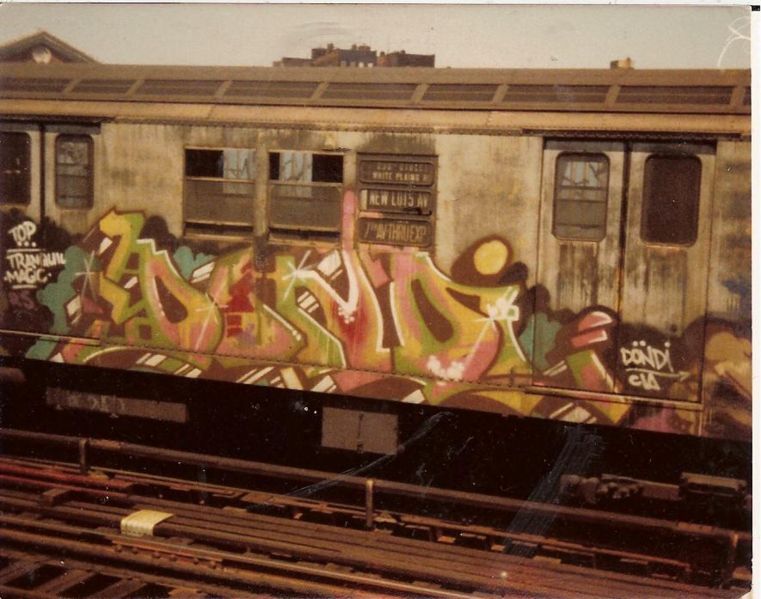
"Evidence of the city’s decline was everywhere: subway cars bruised with graffiti." (Image by JJ Special.)
Jonathan Mahler, author of the incredible book about NYC in crisis during the 1970s, Ladies and Gentlemen, the Bronx Is Burning, wrote a New York magazine article in 2005 that recalled how Rupert Murdoch’s rise to media domination was largely driven by the Aussie’s gambit that the beleaguered city would return to prominence. An excerpt:
“The year was 1976, and evidence of the city’s decline was everywhere: subway cars bruised with graffiti, arson fires that swallowed whole ghetto blocks, soaring murder rates, and annual six-figure job losses. The city put on its best face for the Democratic convention, hastily enacting an anti-loitering law that enabled cops to round up most of the prostitutes in the vicinity of Madison Square Garden. For a few days anyway, even Times Square was more or less hooker-free. But the area soon returned to being America’s most infamous erogenous zone.
Around the country, cartoonists poked fun at New York in its apocalypse: The city was a sinking ship, a zoo where the apes were employed as zookeepers, a stage littered with overturned props. Central Park had become a running joke in Johnny Carson’s nightly monologues (‘Some Martians landed in Central Park today . . . and were mugged’). The syndicated columnists Rowland Evans and Robert Novak understated the matter considerably when they wrote, ‘Americans do not much like, admire, respect, trust, or believe in New York.’
It’s easy now to look back at this moment and see it for what it was—a classic market bottom. But at the time, few recognized it as such. One man who did was Murdoch. Where others saw a city in financial distress, he saw a place ripe for entrepreneurship. Where others saw a failed experiment in social democracy, he saw an opening for simple supply-and-demand capitalism.”
••••••••••
Walter Cronkite on New York City’s financial emergency, 1976:
Tags: Jonathan Mahler, Rupert Murdoch
Life in London from 1500 to 1800, courtesy of Ethan Zuckerman, a researcher at the Berkman Center for Internet and Society at Harvard:
“What’s harder to understand, for me, at least, is why anyone would have moved to London in the years from 1500 – 1800, the years in which it experienced rapid, continuous growth and became the greatest metropolis of the 19th century. First, the city had an unfortunate tendency to burn down. The Great Fire of 1666, which left as many as 200,000 in the city homeless, was merely the largest of a series of ‘named fires’ severe enough to distinguish themselves from the routine, everyday fires that imperiled wood and thatch houses, packed closely together and heated with open coal or wood fires. It’s likely that more Londoners would have been affected but for the fact that 100,000 – a fifth of the city’s population – had died the previous year from an outbreak of the bubonic plague, which spread quickly through the rat-infested city. (It didn’t help that the mayor of London had ordered all cats and dogs killed for fear they were spreading the plague – instead, they were likely keeping the plague rats in check.)“
Tags: Ethan Zuckerman
Midge MacKenzie 1966 film, “Neon,” profiles Pop Art sculptor Billy Apple, who made good use of the titular gas. Tom Wolfe, seen here in those sad years before the white suit had been invented, is featured.
From a March 18, 1966 Time magazine piece: “BILLY APPLE, 30, a New Zealander (real name: Barrie Bates) who works in Manhattan, believes ‘neon is the purest, hippest color in the world; Day-glo phosphorescent paint looks 1929-ish next to it.’ In Auckland, he wanted to be an engineer, now carefully varies the diameter of his neon tubes to produce different hues. Apple turned to art and working in a paint factory, he contracted dermatitis and a lasting dislike for turpentine. Even before he arrived at London’s Royal College of Art, he says, he found his solution in electric colors. While experimenting with them, Apple learned to make highlights by bathing bronze objects in neon. The bronze tints are erased and only the fluid splash of reflected neon remains like a cloak of many colors.”
Tags: Billy Apple, Tom Wolfe

